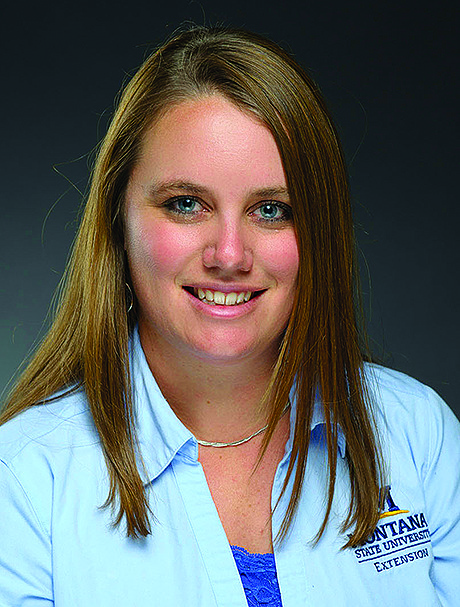Assessing Alfalfa Winter Damage
 | Author:
Allison Kosto, MSU Broadwater County Extension Agent
MSU Broadwater County Extension Agent |
Assessing Alfalfa Winter Damage
Allison Kosto, MSU Broadwater County Extension Agent
After months of white and brown, our world is erupting into a beautiful tapestry of green. It was a long winter and many of us have been eagerly waiting for this time. However, it is disheartening when you notice damage after the long winter. Vole damage and winter burn on trees and lawn damage are common for homeowners. For many farmers and ranchers, alfalfa and winter crops have been slow to come out of dormancy or not coming at all. After the winter we had, it is no surprise to see winter damage across the various landscapes.
Winter damage in alfalfa will likely be seen in areas of the field that are slow to green up or may be completely dead, depending on the severity. Winter-killed roots usually have a grey appearance (sometimes brown). An indication is that the root is soft, and water can easily be squeezed from it. Uneven growth from the same plant can also be an indication that buds had winter injuries.
In our county, in many cases, winter damage was caused by long-standing ice on the fields. You may recall we had a brief warming spell in January. This caused snow to melt, but since the ground was frozen the water had nowhere to go. Ice formed on the surface and proceeded to stay there for the next few months. Even though plants are dormant during the winter, they still transpire and require oxygen. Alfalfa covered by ice for 3 to 4 weeks will likely suffer injury or death.
Many other factors may cause or contribute to winter damage. Older stands are more susceptible. Cutting management also plays a key role. You should allow at least 30 days after the last cutting until the first killing frost to allow the plants to recover and accumulate adequate carbohydrates to get through the winter. Snow cover is important as it helps insulate the plants and crown. Stands that have at least six inches of stubble are able to retain more snow cover and are less susceptible to winter injury.
The next challenge is to figure out what to do with the field. Most universities advocate using stem counts to determine if a field should be replaced. If the stem count is below 40 stems per square foot, then consider a replacement. A healthy stand is usually defined as more than 55 stems per square foot. In the case of winter kill, where the damage is patchy, this method is hard to use. In this case, another technique is to look at the total area lost. Fields with more than 50% loss may need to be removed while fields with less than 50% loss may be worth salvaging. It is important to consider the economics of this decision. Even with a reduction in yield, it may not be worth the time and money to renovate the field.
Interseeding may be an option. Alfalfa plants produce a chemical that reduces the establishment and growth of new alfalfa, called autotoxicity. You can only interseed with alfalfa when the field is less than one year old. For older stands, autotoxicity will make it challenging to impossible. Autotoxicity does not seem to be an issue with other plants, so interseeding with an annual clover such as Red Clover or Berseem or perennial grasses can prolong your field for another year or two or more.
If the alfalfa has been in for more than 2 years, then it may be economical to renovate the stand. Because of autotoxicity, you will need to do a different crop such as a small grain, perennial grass or pulse crop. Rotation intervals of 12 months are recommended to reduce autotoxic effects.
In many cases, alfalfa will recover from winter damage. If you can, give it time before making a decision. We had a similar issue in 2018 and many fields recovered with time. If you have any questions about crop or forage management, stop by your local MSU Extension Office at 416 Broadway or contact us at 406-266-9242 or allison.kosto@montana.edu.